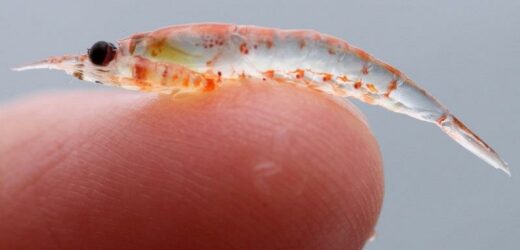ANIMALS
The Social Lives of Animals: How Co-Operation Conquered the Natural World
By Ashley Ward
Profile, $39.99
Apart from all we learn from this fascinating book about the myriad ways in which different species of animals survive and thrive by living together, The Social Lives of Animals is a reminder of why the damage to human lives caused by the COVID-19 pandemic goes way beyond the physical impact of the highly contagious virus.
Any prolonged period of lockdown, quarantine and isolation, while medically necessary to reduce the spread of infection, is kryptonite to the human superpower, which, as Ashley Ward explains, is our sociality. No wonder, then, that there is such widespread concern among mental-health experts about the hidden effects of the profound dislocation caused by the health crisis.
When krill are separated the increase in their heartbeat indicates the stress they feel.Credit:AP
Ward finds a parallel to our adverse reaction to separation among the most unlikely creatures. “Much as we might think of invertebrates as instinctive creatures, devoid of any but the most basic responses and reactions, krill exhibit a fundamental trait shared by all social animals, including us – they hate to be alone. If they’re isolated, they react badly.”
Credit:
Of course, krill, like many sea creatures that are the staple food of other species, depend for their very survival on gathering in large shoals to lessen the chance of being eaten. Nevertheless, the quickening of their heartbeat when separated indicates that the stress they experience is not unlike our own sense of loneliness.
Sociality may be essential to human wellbeing and success, though other animals co-habit and co-operate to a similar or even greater extent. “The more we discover about animals, the more we learn that our supposedly unique traits are, well, not unique,” writes Ward, a professor of animal behaviour at the University of Sydney.
In addition to krill, Ward tells the story of highly social species such as cockroaches, rats, wolves, hyenas, elephants, lions, whales, dolphins, primates, migratory birds, sheep, cattle, locusts, ants, termites and bees. It is no coincidence that one or other of these species is invoked metaphorically in either a positive or negative way when we characterise the good and bad aspects of our lives as social beings.
We like to think of ourselves as independent thinkers though to a surprising degree we are inclined, so to speak, to follow the herd.
“There is a reluctance among people to accept that much of what they do is governed by simple, often unconscious, responses to the behaviour of others. Terms like ‘groupthink’, ‘herd mentality’ and ‘sheeple’ are seen as incredibly negative, yet in many situations these subconscious rules of social interaction can be highly beneficial.”
If most of us did not automatically form a queue when there is a wait, or stay within our lane when driving, then life would be much harder than it is when we do these simple things.
Ashley Ward has a zoological penchant for the hyena and thinks we should jettison the cliche that they are demonic scavengers. Credit:Shutterstock
Ward argues that the more we can learn about the way animals organise themselves into groups both large and small, the more we will understand about ourselves, especially the remarkably sophisticated way in which humans have learned to communicate with each other.
“Language allows us to navigate our communities, to negotiate, to foster and develop relationships, to teach and instruct. In addition, it enabled us to assemble into coherent, co-operative teams, from the hunting parties of our ancestors to the organisations and institutions of the modern day.”
There are many equivalents to the human capacity for communication among other highly social species. While we are aware that animals we admire as intelligent such as whales, dolphins and elephants have languages that we are only beginning to understand, Ward also appreciates less popular, though equally adept, species such as rats and, one of his personal favourites, hyenas.
He has made a special study of hyenas, and is convinced that we should pay them serious attention and discard the cliche that they are nothing more than demonic scavengers. “Their sophisticated society with its complex interrelationships suggests that in terms of brainpower they’re up there with primates. In some contexts, they even outperform chimpanzees.”
The Social Lives of Animals is an enthralling book that will enrich the reader’s understanding of why and how we and the other major social species live together and interact in the way we all do.
The Booklist is a weekly newsletter for book lovers from books editor Jason Steger. Get it delivered every Friday.
Most Viewed in Culture
From our partners
Source: Read Full Article





